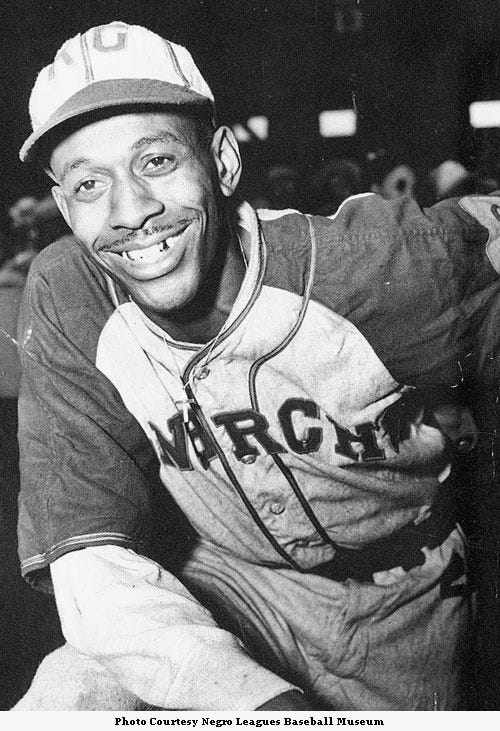Friendly Rivalry

[Satchel Paige] had heard Dizzy Dean on the radio before the game arguing that Satch had no clue how to throw a curve. The truth was that Satchel had been quietly perfecting that pitch and others to go along with his trademark fastball. When Dean came up to bat that afternoon, Satchel yelled, “Hear say you’re goin’ around tellin’ people I ain’t got no curve… Well, then, you tell me what this is.” He threw three curves, with Dizzy swinging at air each time. “How’s that,” Satchel screeched, “for a guy who ain’t got a curve ball?”
~Satchel, Larry Tye
When I was a kid, I had a computer game called Earl Weaver Baseball II. I don’t know what happened to that game, but I’ve never forgotten about it because it helped to shape my interest in one of the more obscure (at the time) aspects of baseball history.
In the game, you could pick a team from certain eras of baseball (AL or NL from 1900–’30, ‘31–’45, ‘45–’60, ‘61-’75, and Negro Leagues). Now, I always used the Negro Leagues team because I quickly found out that some of the best players in the game were on that team. At this point in my life, I didn’t know anything about the Negro Leagues, but I loved a line-up that included greats like Josh Gibson, Oscar Charleston, Willie Wells, Pop Lloyd, Cool Papa Bell, Buck Leonard, Biz Mackey. Not to mention the best pitcher in the game: Satchel Paige.
I’ve been trying to learn more about the Negro Leagues and the greats of the game that got excluded simply because of the color of their skin over the last few years. I picked up on book a while back entitled, “Satch, Dizzy & Rapid Robert” that took a look at the barnstorming tours of Satchel Paige and Dizzy Dean, and later on, Bob Feller.
One of the things that I learned in this book is the great respect that Dizzy Dean had for Satchel Paige. Certainly, he said some things that were off-color — as would have been expected in that era — but he also was very complimentary of Satchel. He once commented that he wished Paige and he could play on the same team because they would have the division wrapped up by July and could go fishing until the World Series. Dean never pushed for integration, but he certainly would have welcomed it.
One thing that was clear to me throughout the book was that this was a friendly rivalry between the two. Dean didn’t say that Satchel didn’t have a curve because he believed he was an inferior pitcher. It was because he had never seen Paige throw one — and he had plenty of opportunities to see Paige pitch. But one of the hallmarks of Paige’s career was that he was always improving.
I think that gets lost in his bravado and the stories of his exploits on and off the field, but Satchel Paige was never satisfied with the way things were. He was constantly trying to challenge himself, and to grow as a player. Consequently, it’s no coincidence that he was one of the greatest players to have ever played the game of baseball.
And I imagine that when Paige finally broke into the Majors in 1948 at the age of… well… who knows for sure, but most people say he was 42 — there’s some difference of opinion as to exactly when he was born — anyway, I imagine Dizzy Dean was more excited than most for his friend to finally get the chance that was long-overdue.
